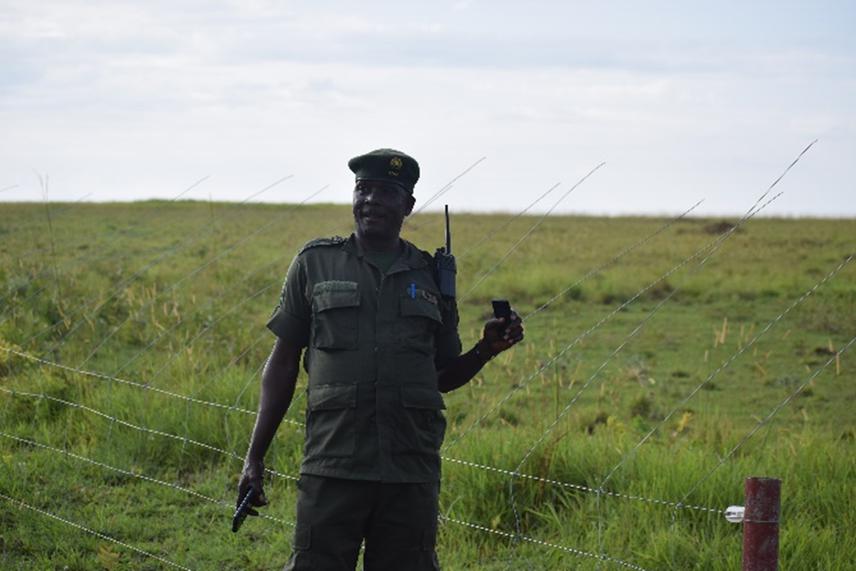William Luwaga
This project is entirely new but builds on the existing gap in scientific literature on the effectiveness of mitigation measures for human-elephant conflicts in Uganda. This project will specifically target evaluating the efficacy of solar fences in mitigating human–elephant conflicts around local communities of Got-Apwoyo and Te-Okot. My project is focusing on, assessing the local communities’ perceptions on the implementation and effectiveness of the fences at reducing human–elephant conflicts, raising awareness about elephant conservation among communities residing in and near elephant habitats.

Uganda Wildlife Authority Officer overseeing the collaboration between Uganda Wildlife Authority and the project to monitor the performance of the electric fence system ©William Luwaga.
The project is anticipated to yield a number of key conservation outcomes. Firstly, the project aims to identify the weak and less effective measures and implement cost effectives practices including local community participation in the maintenance of the solar fences. This will reduce the instances of power leakages and improving its strength in being a barrier to elephants. Local community participation in fence projects and mostly maintenance has been reported to be successful and sustainable. These interventions are more likely to result in reduced conflicts between local communities leaving adjacent the park boundary and elephants, but will also contribute to minimizing human and elephant casualties, mitigating crop damage and elephant killings. Hence fostering co-existence in this natural resource based coupled human system. Secondly, the project will conduct community sensitization campaigns which will help to improve community attitudes towards elephant and conservation efforts, fostering positive engagement with local communities of Got-Apwoyo and Te-Okot. This is geared towards the enhancement of the overall ecosystem health in the northern part of MFNP, contributing to the preservation of biodiversity. Lastly, the project will work towards building a strong and effective collaboration with the key stakeholders in the landscape, including local communities, Uganda Wildlife Authority, non-governmental organizations such as Innovation for Conservation (ICON) and Snares to Wares Initiative.
Header: A segment of the electric fence installed to reduce human-elephant conflicts in the project area.